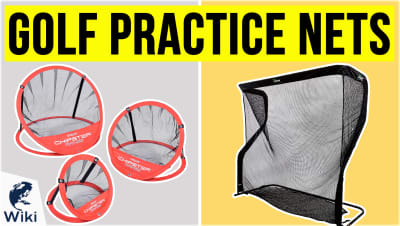7 Organizations Working To Protect America's Rivers
Rivers supply drinking water, irrigate crops, and power cities across the United States. Unfortunately, these bodies of water are often threatened by pollution, urban development, and climate change. That's why organizations like the ones listed here work to protect these precious resources and preserve them for generations to come. This video was made with Ezvid Wikimaker.
U.S. Groups That Protect & Preserve Rivers
| Organization | Headquarters Location | Mission |
|---|---|---|
| Georgia River Network | Athens, GA | Help people enjoy, connect with, and advocate for economically vital and clean flowing rivers |
| Friends of the Chicago River | Chicago, IL | Improve and protect the Chicago River system for people, plants, and animals |
| West Virginia Rivers Coalition | Charleston, WV | Conserve and restore West Virginia's exceptional rivers and streams |
| Dan River Basin Association | Eden, NC | Protect and promote the Dan River Basin through recreation, education, and stewardship |
| Yadkin Riverkeeper | Winston-Salem, NC | Respect, protect, and improve the Yadkin Pee Dee River Basin through education, advocacy, and action |
| Utah Rivers Council | Salt Lake City, UT | Promote sustainable aquatic ecosystems by protecting Utah's watersheds and the communities they support |
| Patuxent Riverkeeper | Upper Marlboro, MD | Conserve, protect, and replenish Maryland's longest and deepest intrastate waterway through strategic advocacy, restoration, and education |
The 10 Longest Rivers In The U.S.
According to the U.S. Department of the Interior
| River | Length | Location of Mouth | |
|---|---|---|---|
| 1. | Missouri | 2,540 miles | Missouri |
| 2. | Mississippi | 2,340 miles | Louisiana |
| 3. | Yukon | 1,980 miles | Alaska |
| 4. | Rio Grande | 1,900 miles | Mexico / Texas |
| 5. | St. Lawrence | 1,900 miles | Canada |
| 6. | Arkansas | 1,460 miles | Arkansas |
| 7. | Colorado | 1,450 miles | Mexico |
| 8. | Atchafalaya | 1,420 miles | Louisiana |
| 9. | Ohio | 1,310 miles | Illinois / Kentucky |
| 10. | Red | 1,290 miles | Louisiana |
Fascinating Facts About Water
- The only substance that naturally exists in solid, liquid, and gas form at temperatures normally found on Earth
- Called the "universal solvent" by scientists because it dissolves so many substances
- Air pressure affects its boiling point
- Covers nearly three quarters of the earth's surface
- 97% is found in the oceans
- Most of the remaining 3% is unavailable to humans: too far underground, trapped in glaciers and ice caps, or too heavily polluted
- Less than 1% of water on Earth is available fresh water
Why Do Rivers Curve?
In Depth
Rivers make up some of the nation's most essential natural resources, and they are beloved sites of recreation and relaxation. They represent, however, some of the ecosystems most acutely threatened by climate change and other abuses of the environment. In states from the east coast to the west, organizations have come together to protect and nurture local rivers. This list, arranged in no particular order, looks at the work of some of them.
At #1, Georgia River Network was founded on the banks of the Oconee, near Dublin, by a group of men who loved fishing and paddling and who wanted to protect Georgia's aquatic treasures. As the voice of the state's fresh watercourses, the organization helps residents and visitors enjoy, connect with, and advocate for economically vital and clean flowing rivers. Members fight for strong environmental protections and conservation efforts and get acquainted with others who love and depend on nature.
In matters of protection, the group endorses priorities set by The Georgia Water Coalition. The network has also assembled an extensive online guide to state waterways, trails, and paddling sites. There is also a directory of river groups that allow members to locate likeminded communities and advocacy organizations in their local area. Chip in by donating and receive regular updates on GWC projects.
In matters of protection, the group endorses priorities set by The Georgia Water Coalition.
For #2, it's Friends of the Chicago River, the only body solely dedicated to that system of canals and waterways that flow through the Windy City. Since 1979, this committee has worked to improve the health of this urban network for the benefit of people, plants, and animals. By doing so, it has laid the foundation for the river to be a beautiful, continuous, and easily accessible corridor of open space in the metropolitan region.
The organization's policy and planning initiatives have addressed critical water quality improvements, the need for new and accessible open space, and the attitudes Chicagoans held about their aquatic bequeathment. Program areas include outreach efforts in schools and museums, and through canoe trips. In addition, on-the-ground projects seek to restore and preserve wildlife and their habitats. Get involved and become a Chicago River Eco-Warrior.
Clocking in at #3, it's The West Virginia Rivers Coalition, which was founded by paddlers and whitewater enthusiasts who care deeply about restoring and caring for the Mountain State's renowned free-flowing waters and scenic beauty. It is a statewide voice for water-based recreation and clean, drinkable, swimmable, and fishable rivers and streams, from the headwaters to wherever it flows.
It is a statewide voice for water-based recreation and clean, drinkable, swimmable, and fishable rivers and streams, from the headwaters to wherever it flows.
Advocating in both Charleston and Washington, D.C., the statewide organization focuses on water policy and protecting public lands. It fights for access to safe drinking water for all local communities. Volunteers implement a quality monitoring project to keep a close eye on the resources supporting trout populations and fisheries. Additionally, it pushes for sensible solutions to the looming problems imposed by climate change. Educate yourself by checking out a fact sheet online.
#4: The Dan River Basin Association came together in 2002, spurred by outdoor enthusiasts and concerned citizens, to preserve and promote the wilderness-like rivers in this border region of Piedmont North Carolina and Virginia. With the decline of the tobacco and textile industries, the abundant high-quality water in this area began to appear a highly exploitable economic asset. The group's founders support multiple uses for the river, including recreation, commercial ventures, and municipal growth.
Environmental education opportunities are available to teachers, children, private firms, and farmers. Recreational activities include free outings, like hiking or paddling. DRBA also works with partners to develop master plans for local government, property owners, and businesses who want to develop trails, greenways, river access points, blueways, and blue trails. Pitch in by bidding on an item at the annual Art and Nature auction.
Pitch in by bidding on an item at the annual Art and Nature auction.
For #5, we've got Yadkin Riverkeeper, which supports North Carolina's second largest basin, composed of thousands of stream miles and more than 20,000 lake acres across many counties. It works to address threats to the river posed by long-term chemical contamination, coal ash storage, extreme weather events, climate change and sprawl, while redoubling efforts to protect the Yadkin River's vulnerable floodplains, tributaries, and access points.
The group is currently trying to increase its capacity to monitor and respond to other threats to the river and lake systems, particularly posed by plastic trash, algae blooms, and large-scale animal production in the basin. It makes available online resources like water issues reporting, maps, and expert guides. Events include panel discussions, fundraising parties, tours, and races. Do your part by becoming a member.
At #6, The Utah Rivers Council works to protect the Beehive State's rivers, including the Bear and the mighty Colorado, and the ecosystems and communities they support. It's a grassroots organization dedicated to the conservation and stewardship of nature and sustainable clean water sources for both people and wildlife. Since 1994, the group has implemented its mission through organizing, direct advocacy, research, education, leadership, and litigation.
Since 1994, the group has implemented its mission through organizing, direct advocacy, research, education, leadership, and litigation.
A community water conservation initiative tries to change the fact that urban Utahns are decades behind many western counterparts in avoiding the waste of this precious resource. To this end, the organization's website offers many tips and suggestions for efficient usage. The 40 by 30 campaign takes a political approach to dramatically reducing needless consumption. The council's varied media productions count newsletters, a blog, videos, and reports. Join the effort by signing up for email alerts.
Wrapping up the list at #7, Patuxent Riverkeeper aims to conserve and replenish Maryland's longest and deepest intrastate waterway. Through strategic advocacy, restoration, and education, the goal is long-term sustainability for the ecosystem of the entire Patuxent River basin and the people who rely on its future. The group presses state government to implement and enforce regulations toward this end, and rallies locals to contribute to community efforts.
Tours and water trail guides connect residents to this natural wonder. Community building and stewardship projects create a context in which they can then work to protect it. The group pursues values of environmental justice, diversity, equity, and inclusion through advocacy, lobbying, and policy work. Online resources include a live webcam and a watershed map, as well as archives with audio and video materials from the organization's history. Make your own contribution by purchasing an item from its internet store.



















